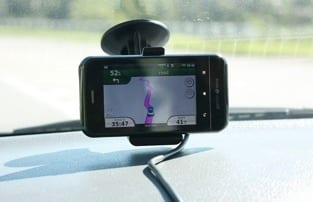We’re always interested in news about fleet-tracking and telematics technology in the field, so we paid close attention to a recent dispatch from Mike Wade of Fleet Smarts detailing the findings at last month’s Goverment Fleet Expo (GFX). Among the news and ideas creating buzz: a study projecting commercial telematics usage to double over the next five years.
 But that wasn’t all. Wade also mentions how fleets are incorporating not just real-time but also passive GPS technology solutions to reduce costs, and how WiFi telematic technology is currently being used to allow drivers to connect with their laptops or tablets in the field.
But that wasn’t all. Wade also mentions how fleets are incorporating not just real-time but also passive GPS technology solutions to reduce costs, and how WiFi telematic technology is currently being used to allow drivers to connect with their laptops or tablets in the field.
One of the major worries among field service companies, along with the cost of telematics solutions, is the effect on morale GPS tracking can have on drivers. We’ve covered how GPS solutions won’t succeed unless they’re “sold” to their service techs first, and using GPS to combat “goof time” was also discussed at the Field Service 2011 conference we attended in Arizona. And at GFX, they definitely had some ideas of their own to make sure telematics isn’t seen as the enemy by field service technicians:
Fleets can overcome adoption barriers by implementing several initiatives to help appease employee concerns. A top driver incentive program which utilizes the telematics data for supporting a good driver program can be useful. Also having positive driver testimonials regarding the benefits of telematics can help overcome the “Big Brother” mind-set.
While positive driver testimonials could work, other questions remain. If it’s part of a marketing video created by a telematics supplier, it could be met with skepticism by drivers. Perhaps an idea could be to have certain leaders within the firm test telematics solutions before they’re provided to the rest of the drivers, then have those respected technicians espouse the greatness of said tools before they’re implemented fully.
On the other hand, a top driver incentive program sounds like a can’t-lose proposition. Companies can easily measure the top driver each week or month by a variety of factors including highest miles per gallon, lowest idle times or best driver at adhering to the speed limit. Especially if a bonus is available to the top performers, that could be a great way for drivers to not just adopt new technologies, but motivate them to become experts at utilizing them as well.


Share this: